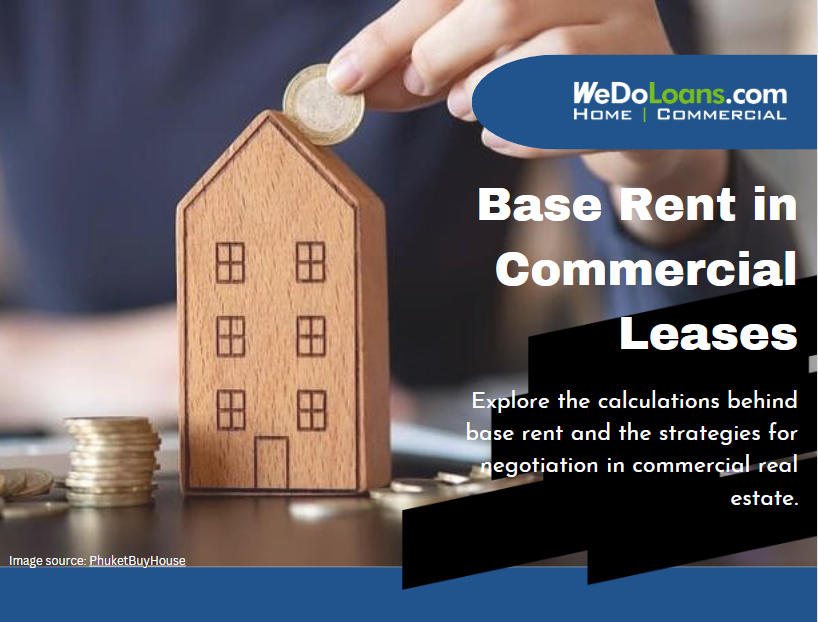
What is Base Rent?
Base rent is a crucial concept in commercial real estate leasing. It represents the fundamental rent component that a tenant is obligated to pay under the terms of the lease. This amount is usually specified clearly within the lease agreement and serves as the starting point for rental payments, upon which other charges may be added during negotiations.
The Role of Base Rent in Lease Negotiations
Negotiating rent is a standard practice among commercial property investors and tenants. Discussions typically revolve around the base rental rate and other critical aspects, such as annual rent increments and potentially, periods of free rent. Establishing the base rent is a foundational step in these negotiations.
Calculating Base Rent
Base rent is typically calculated by multiplying the rentable square footage of the space by the agreed-upon rental rate per square foot. It’s important to note that this calculation uses rentable square footage, which may differ from usable square footage that includes only the area occupied by the tenant.
Example of Calculating Base Rent:
Consider a leasing scenario where an office space encompasses 10,000 rentable square feet at a rate of $25 per square foot annually. The base rent would be calculated as follows:
10,000 square feet × $25/sq ft = $250,000 annually
Rentable vs. Usable Square Footage
The distinction between rentable and usable square footage is significant in commercial leases. Usable square footage refers to the actual area exclusively used by the tenant, including office space, storage, and other dedicated areas. In contrast, rentable square footage includes shared or common areas such as restrooms and hallways.
Types of Commercial Leases: Base Rent and Beyond
Commercial leases can vary significantly, with each type dictating how rent and other expenses are managed:
- Net Leases: Often used in retail and industrial properties, these require tenants to pay base rent plus a share of property-related expenses like taxes, insurance, and maintenance.
- Gross Leases: In this all-inclusive arrangement, tenants pay a fixed fee covering all costs, making financial planning simpler but potentially more expensive.
- Modified Gross Leases: These are a hybrid, with tenants paying base rent plus a portion of operating expenses, commonly utilized in office rentals.
Key Factors Influencing Base Rent
Several factors influence the determination of base rent, including:
- Property size and location
- Market conditions and demand
- Negotiated tenant allowances
- Property type and available amenities
Base Rent Escalation
Base rent escalation clauses anticipate regular increases in rent, typically as a percentage, ensuring that property income keeps pace with market conditions and inflation.
Can Base Rent Be Negotiated?
Absolutely. Tenants often have room to negotiate more favorable base rents by presenting compelling reasons such as business credibility, specific space needs, or financial stability. However, operational expenses generally remain non-negotiable as they are often fixed costs incurred by third parties.
Conclusion
Base rent forms the core of commercial lease agreements, serving as the benchmark for further negotiations and financial arrangements. While the structure of leases can vary, understanding and negotiating the base rent is essential for both property owners and tenants to ensure alignment with their financial and operational goals.
